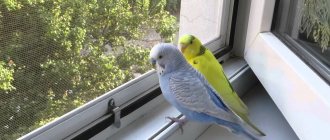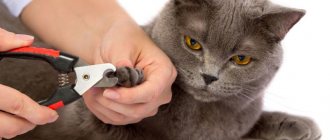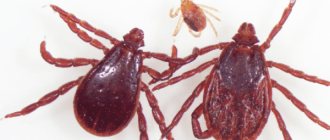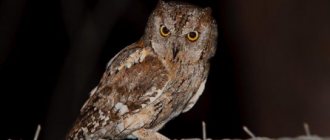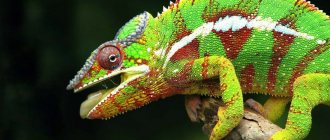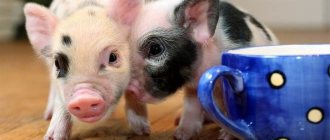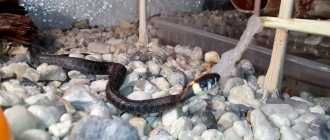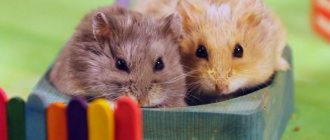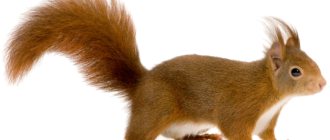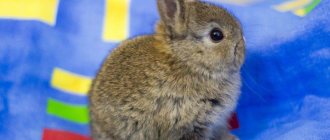With proper care, the parrot will be active, healthy and live a long life. The six most significant components of caring for a parrot are: choosing the right cage, good nutrition, maintaining a sleep-wake schedule, cleanliness in its home, a sufficient number of toys and communication with it. Following the recommendations presented will help ensure your pet longevity and good health.
You will learn how to properly care for any type of parrot: budgies, cockatiels, lovebirds, grays, cockatoos, Amazons or others. After all, regardless of the size of the bird, the same rules apply to everyone. A small example. Think about the fact that the maximum lifespan of a wavy is 21 years, and the average, according to various experts, is only 6-10 years. The conclusion is obvious: good care of a parrot will ensure longevity and comfort of living with people in city apartments.
Principle 1. The right bird cage is the foundation of keeping
The first thing an owner who wants to provide good care for a parrot should take care of is providing the pet with its own house. For comfortable living of a bird, not only the appropriate size of the cage is important, but also the very location of the bird’s apartment and its interior decoration. The main criterion for the size of the house is that the bird can easily spread its wings in it. An important criterion is the length of the cell, because Parrots move preferentially horizontally rather than vertically. The location of the rods is also considered important; horizontal rods, such as, for example, in the Ferplast Palladio 3 model, are more recommended than vertical ones.
Correct location of the house: away from electrical appliances, drafts, bright light. It is better if one side of the cage is pressed against the wall. The parrot, while in the cage, should be at the level of your eyes; if the cage is low, then you should think about a table or cabinet.
Toys and other internal accessories must be present in the cage, but you should not overload the house with them; the parrot should have space to move freely inside its apartment.
Particular attention should be paid to the perches. Perches can be different - plastic, mineral, game, but the basic perches should be natural branches with bark. Select the perches so that the diameter changes along its entire length from the smallest (when the claws almost touch) to the largest (when the claws rest against the tree). If it is difficult to find a varying diameter along the entire length of the perch, then offer the bird several perches of different diameters. The perches need to be replaced periodically due to their contamination with droppings or food debris, which are already difficult to src=»https://4parrots.ru/wp-content/uploads/2014/11/50514-kletka.jpg» class=»aligncenter» width ="750″ height="188″[/img]
Air temperature and humidity: comfortable conditions for keeping a budgie
Many parrots tolerate a decrease in temperature for a short time normally. Despite this, you should not allow the bird to stay in a cold room for a long time or expose it to noticeable changes in degrees.
Temperature is very important for the wavy
The recommended temperature for optimal keeping of parrots is from 18 to 20 C. Under these conditions, a favorable atmosphere is created for full life activity, but during breeding it should be lowered by 2-3 units.
A successful pair of budgies
Temperatures should not be allowed to exceed the established norm, as this can lead to a deterioration in the bird’s well-being, decreased appetite and impaired reproductive function. It is known that when the temperature regime is violated, a large percentage of unfertilized eggs is observed. Lower temperatures have a positive effect on the processes of reproduction and fertilization. The level of air humidity should also be given sufficient attention.
For the room in which the bird is located, the humidity should be in the range of 70-80%. The temperature is kept at 15-20 C.
Control of humidity levels is necessary when temperature changes. High humidity can cause hypothermia in a parrot.
Principle 2: Provide your parrot with a varied diet.
When it comes to how to properly care for a pet parrot, one of the key tasks is creating the right diet. Here are the basics of creating a good, varied diet. Nowadays there is a huge variety of ready-made feed mixtures for birds on the market, so much so that it’s dizzying. Popular brands in Russia include: Versele-Laga, Padovan, Fiory, RIO. However, there are other high-quality foods. When purchasing any mixture, be sure to check the seal of the package, as well as the expiration date. If you are alarmed by the sight or smell of food at home, it is better to throw away the packaging. But remember that many feeds have additives in the mixture such as granules (multi-colored lumps with a bright, rich smell) - this is an absolutely safe additive for poultry, nothing more than pressed grains with the addition of minerals and vitamins.
However, dry grain mixture is only half of the diet. First of all, this mixture was invented to simplify feeding and care, but if you want to ensure longevity for your pet, then the diet needs to be varied. Include in the menu: fruits; vegetables; greenery; porridge cooked in water without salt and sugar; fresh branches; sprouted food. Don't forget to keep the feeders and drinkers clean. The water in the drinking bowl must be changed daily. And in the hot season, it is possible several times a day.
The issue of diet composition is discussed in more detail in the material “feeding parrots.”
How to care for a budgie at home
If you are planning to purchase budgies, be sure to study all the important features of care and maintenance at home. It is important that feathered pets are always in perfect order. To do this, you should follow the recommendations and follow the rules of content.
Proper nutrition
The health and proper development of domestic budgies depends on proper nutrition. The menu of a feathered pet should be balanced, it should contain food mixtures with a high level of useful components. They will be able to prevent the development of dangerous poultry diseases, strengthen their immunity and the body’s protective properties.
Feeding your budgie should be based on grain feed. The largest part should be millet. But to prevent parrots from having problems with the digestive system, feeding grain mixtures should be in a certain percentage ratio:
- yellow millet – 50%;
- white millet – 25%;
- millet with red color – 15%;
- Hulled oats – 10%.
So what else to feed budgies? Additionally, the menu should include other types of food:
- greenery. In the warm season, the bird will happily eat fresh lettuce leaves, a mixture of plantain, dandelion, and clover greens. In winter, sprouted oats are suitable;
- fresh vegetables and fruits, berries. Parrots will eagerly eat fresh carrots, cucumbers, tomatoes, cabbage, zucchini, and radishes. Among fruits and berries, preference should be given to apples, grapes, bananas, peaches, raspberries, strawberries;
- minerals. The parrot should sometimes be given chalk and sepia, it is sold in any pet store.
Communication
Budgerigars are endowed with good intelligence and intelligence. They are very sociable, therefore they require increased attention from humans or their relatives. If a bird is bored, it will quickly begin to waste away.
When keeping budgies at home, you should not forget about communication and attention. It is important to talk to your feathered pet every day and play with it. When you enter, be sure to say hello to the bird and ask how it is doing.
You should already know from behavior what a budgie needs. If he tweets and chirps intensely, then he shows you his attention and wants to talk. Don't ignore it, play with it, talk to it, sing a song.
Freedom for parrots
Many beginners often wonder: is it necessary to let a budgie out of its cage? You should not limit your pet’s freedom; sometimes you must let him out of the cage so that he can freely fly around the room. This is required for the full psychological development of the bird.
But it is important to follow some recommendations:
- You must first check that all doors and window openings are closed;
- limit access to containers with water - bathtubs, aquariums, toilets, sinks; if the parrot gets into them, it will choke;
- If there are other pets in the apartment or house, then keep an eye on the parrot when walking. Otherwise, a cat or dog might catch him. It is better to remove all the inhabitants to another room and close the room with the bird.
Microclimate
Full care of a budgie includes maintaining the required microclimate in the room where the pet’s cage is kept. It affects the development and health of the bird. The room should have a humidity level of 60-70%. A dry climate for a budgie will negatively affect its condition.
The most suitable temperature for budgies in the room in which they are kept should be kept at a thermometer reading of 23-25 degrees Celsius. During the cold season, you should use a special lamp for heating.
Diseases and prevention
The health of budgies should come first. When keeping them at home, they can sometimes develop serious illnesses that can lead to the death of the pet. To help your bird, you should know the types of diseases and how to treat them.
- Scabies mite With this disease, holes appear in the area of the cere. The bird arrives in a nervous state, constantly itching with its beak and paws. To eliminate this disease, the bird must be regularly treated with a special product that can be purchased at a veterinary pharmacy or pet store.
- Helminths Parrots can develop worms that parasitize the intestinal area. The main symptoms are lethargy, deterioration of plumage, weight loss. Parasites often come with low-quality food. To ensure that your budgie is not infected with helminths, it is important to take proper care; you need to use only fresh and high-quality food for feeding. If you become infected with helminths, you should contact your veterinarian.
- Colds occur in birds due to their exposure to drafts and hypothermia. During a cold, a parrot sneezes, coughs, and has a runny nose. Treatment is performed using warming.
- Gastrointestinal disorders Manifest when feeding low-quality food. During these illnesses, the bird becomes lethargic, apathetic, and has loose and frequent stools. To improve the condition, the feathered pet should be given easily digestible food and B vitamins.
Principle 3. Control your daily routine
In the question of how to properly care for a parrot, the ability to provide the bird with a healthy, long rest is of considerable importance. Just like for humans, its physical and psychological health depends on how much sleep your pet gets. The parrot should have the opportunity to rest for 9-10 hours, preferably in the dark. In order not to depend on summer and winter time (when it gets dark or light at different times), it is best to cover the parrot's cage with a dark, breathable fabric. Then you will provide your pet with a stable wakefulness and sleep pattern. Be prepared for the fact that at first your feathered friend may get scared when trying to cover the cage, so get used to this slowly, first cover only part of the house, and then daily increase the covered space of the apartment.
What you need to know before purchasing
Before purchasing a pet feathered friend, you need to prepare yourself for the fact that you will have to face difficulties while caring for budgies.
Birds wake up early - with the first rays of the sun, so the vibrant trills can already be heard at 5 - 7 am. Ask yourself: are you ready to wake up at such a time every day?
Parrots are partial to indoor plants, especially climbing ones. They bite leaves, dig in the ground, and climb stems. Noisy birds cannot sit in one place for a minute, so you will need to collect scattered feathers, seed husks and other debris throughout the house.
Principle 4. Cleanliness is the key to health
Remember that caring for a pet parrot also includes keeping the cage clean and tidy. In addition to daily cleaning, as well as washing the feeders and waterers, remember to regularly wash the cage itself. If the size of the bird's house allows, then the easiest way is to take it to the bath. And if you can also easily unfasten the tray, which allows you to separate the top and bottom of the lattice dwelling, as for example in the Diva cage. If not, you will have to wash the cage in the room. Do not use chlorine-containing cleaning powders or any other chemical products. Your best helpers are hot water, a rag, a brush and a spray bottle.
The parrot itself also needs water treatments. Unfortunately, not all pets love to bathe. But the owner’s task is to understand how to care for a pet parrot so that the bird’s plumage is clean and healthy. To do this, watch your pet and experiment with different water treatments. Offer to bathe in different ways: in the bathroom under the shower; in a shallow bowl; in wet lettuce leaves suspended in a cage; from a spray bottle. In any case, gradually teach the bird how to shower; do not allow bathing to cause negative emotions in the bird.
After bathing, the pet should be kept warm, in a draft-free room, until it is completely dry.
Feeding
At home, these parrots feast on fresh fruits, fruits and nuts. But living in our latitudes, we limit ourselves to ready-made mixtures of grains, seeds, vegetables and fruits.
Lack of calcium is considered a common occurrence in Grays. You can replenish this element in your diet using simple chicken egg shells, pre-ground and mixed with softened food.
You should not offer your gray parrot fruits with a high vitamin C index. Oranges, lemons, rose hips. When this vitamin enters the body, the iron element in the body increases, which can negatively affect the well-being and health of the Gray.
Principle 5. Provide activities for your parrot in your absence.
In nature, the life of a bird is extremely rich - communication with its own kind, searching and obtaining food, threats from predators. In captivity, the risk of going hungry is reduced to zero, there are no dangers. When alone, your pet begins to get bored. Therefore, the parrot needs toys, and this is not pampering, but a need during life in captivity. For psychological comfort, a domesticated bird must be busy with something, because... boredom is very dangerous for our feathered pets. If the parrot is not able to release its energy, it will affect its health.
The best way to satisfy the bird's natural curiosity and tendency to destroy everything that catches its eye is to offer the bird a toy. The toys themselves must be periodically replaced due to wear and tear or because the feathered pet is bored with the fun. A good choice would be to offer foragers - interactive toys in which treats or food are hidden. To gain access to food inside the forager, you will have to think and put in some effort. Those. such an accessory promotes development, because stimulates the search and extraction of food.
Location
- Due to sudden temperature changes, drafts, and the presence of heating and air conditioning appliances, you should not place your pet’s cage in the hallway, hallway, or kitchen. If you want your pet to live a long time, you should absolutely not smoke in the presence of your parrot.
- For comfortable maintenance of the cage, it is necessary to place it at eye level. This way, you don’t have to make extra efforts to admire and watch the parrot. The main thing is not to install the cage higher than you, otherwise your superiority will be lost in the eyes of your pet.
- The feathered pet is very picky and cannot tolerate loud sounds. Noise leads parrots to nervous disorders; install the cage in a place where there are no speakers, televisions, musical equipment and other noisy devices.
Principle 6: Communication is vital
This is an extremely important point. Parrots are social creatures. Communication is vital for them. Having snatched the bird from nature and brought it home, we actually became members of its flock. No matter how many toys a parrot has, it will never replace full communication between a person and a bird. Especially if you want the parrot to be not just a decorative beauty behind bars, but to become your friend and companion.
To ensure good care for your parrot, communicate with your pet, talk to it, play, teach tricks. Remember that any training or taming of a bird must be done under the sign of mutual desire. If you are in a bad mood, put off working with the bird until next time. Similarly with a bird, if your feathered pet is not in the mood, do not force him to study under any circumstances, it is better to just talk to the bird, leaving the lesson for another day.
So, we have looked at the principles of how to care for a pet parrot. Now it’s up to you – provide decent maintenance for your pet!
Education
Caring for this parrot is not difficult. A feature that can become a problem is the tendency of some individuals to chew. But as they grow older, they begin to understand that the beak can be used as a tool to educate their owner. To prevent the manifestation of undesirable aspects of behavior, the owner needs to promptly stop or direct certain behavior in the desired direction.
In your absence, the parrot may begin to chew wires from the wiring, because they perceive everything that surrounds them as entertainment, which they need to play with and chew.
How to buy toys for a parrot cheaply?
- This site has an amazing range of bird supplies. Using website tools, you can choose suitable toys at the most affordable price. The first step is to choose the type of toys: for paws and beaks, musical, educational (another name for food), mirrors or parts for self-production. First, go to the general section with fun - Toys.
- Now you need to choose the size of your pet. For example, gray.
- After completing these operations, the site will automatically select products that may suit your pet. All of them will be sorted by price - first the most affordable models, and at the end - expensive premium models. All you have to do is look at the products you like and buy them.
